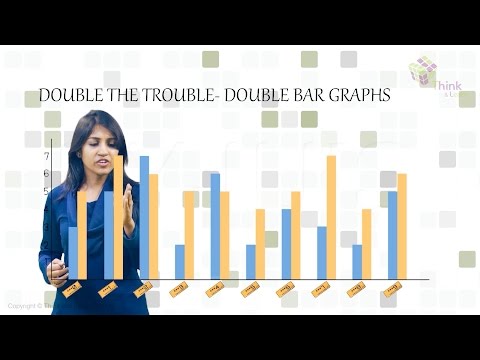Pie chart questions with solutions are provided for students to practice and learn how to interpret pie charts. In statistics, pie charts are circular charts used to represent data graphically. In a pie chart, different sectors represent the size of the data; the given data is converted in terms of the central angle of the pie chart. Bigger the data larger the central angle.
Thus, we can conclude that:
- Pie Chart is a circular representation of data.
- It is called a pie chart because the sectors of the circles are just like the slices of a pie.
- The area within each sector (slice) represents the size of the data.
- The area of each sector is directly proportional to the frequency of the data.
- The value of the central angle for each sector is determined by the formula: (Given Data/Total of all the data) × 360o.
Learn about how to draw a pie chart.
Some important Formulas:
\(\begin{array}{l}Percentage \:\:of \:\:a \:\:data=\frac{Given\:\:data}{Total\:\:of\:\:all\:\:data}\times 100\end{array} \)
\(\begin{array}{l}Central\:\:angle\:\:of \:\:a \:\:data=\frac{Given\:\:data}{Total\:\:of\:\:all\:\:data}\times 360^{o}\end{array} \) |
Pie Chart Questions with Solution
Try to solve the following pie chart questions and check your answers with the solution given here.
Question 1:
The below pie chart shows the sale of different fruits in a day for a shop:

Answer the following questions based on the pie chart:
(i) If a total of 1200 kg of fruits were sold in a day, calculate the amount of bananas sold (in kg).
(ii) Find the difference between sales of grapes and oranges.
(iii) Calculate the central angle for others.
Solution:
(i) Total amount of fruits sold = 1200 kg
Percentage of banana sold = 30%
Amount of banana sold = 1200 × (30/100) = 360 kg
(ii) Amount of grapes sold = 1200 × (10/100) = 120 kg
Amount of oranges sold = 1200 × (15/100) = 180 kg
Difference = 180 – 120 = 60 kg
(iii) Amount of other fruits sold = 1200 × 20 = 240 kg
Central angle = 240/1200 × 360o = 72o.
Question 2:
In the summer, a survey was conducted among 400 people about their favourite beverages. The following pie chart shows the data:

Answer the following questions:
(i) How many people like tea?
(ii) How many more people like coffee than cold coffee?
(iii) What is the total central angle for iced tea and cold-drinks?
Solution:
(i) Total number of people = 400
Number of people like tea = 400 × 56/100 = 224
(ii) Number of people like coffee = 400 × 24/100 = 96
Number of people like cold-coffee = 400 × 12 = 48
Number of people like coffee more than cold-coffee = 96 – 48 = 48.
(ii) Number of people like iced-tea = 400 × 6/100 = 24
Number of people like cold-drinks = 400 × 2/100 = 8
Central angle for iced-tea = 24/400 × 360o = 21.6o
Central angle for cold-drinks = 8/400 × 360o = 7.2o
Total central angle = 21.6o + 7.2o = 28.8o.
Question 3:
The monthly expenditure of two companies A and B are 90 lakhs and 95 lakhs, respectively. The following piecharts shows their monthly expenses for various sections:
Company A

Company B

Answer the following questions:
(i) How much more company B spends on employees than company A?
(ii) How much more company B spends on raw materials than company A?
Solution:
(i) Amount spent by company A on employees = 90,00,000 × 30/100 = ₹ 27,00,000
Amount spent by company B on employees = 90,00,000 × 34/100 = ₹ 30,60,000
More money company B spend than company A = 30,60,000 – 27,00,000 = ₹3,60,000.
(ii) Amount spent by company A on raw materials = 90,00,000 × 18/100 = ₹ 16,20,000
Amount spent by company B on raw materials = 90,00,000 × 19/100 = ₹ 17,10,000
More money company B spend than company A = 17,10,000 – 16,20,000 = ₹ 90,000.
Question 4:
The following pie chart shows the percentage of users of a particular app.

If there are total of 15 lakhs users, then answer the following:
(i) How many total users are there from UP, Bihar and Maharashtra?
(ii) What is the central angle for Karnataka app users?
Solution:
(i) Total users = 15 lakhs
Users from UP = 15,00,000 × 35/100 = 5,25,000
Users from Bihar = 15,00,000 × 30/100 = 4,50,000
Users from Maharashtra = 15,00,000 × 15/100 = 2,25,000
Total users = 5,25,000 + 4,50,000 + 2,25,000 = 12,00,000
(ii) Users from Karnataka = 15,00,000 × 15/100 = 2,25,000
Central angle for Karnataka users = 2,25,000/15,00,000 × 360o
= 54o
Question 5:
In a poll, people have to vote for either of the 6 options which are A, B, C, D, E & F. The below pie chart shows the obtained results.

After studying the pie chart carefully, answer the following questions:
(i) If 1080 voters have voted for option C, then find out the total number of voters.
(ii) How many voters voted for options A, B and F.
Solution:
(i) Number of voters for option C = 1080
Central angle for option C = 135o
Now, Number of voters ∝ Central angle made
∴ Number of voters/ Total number of voters = Central angle for option C/360o.
⇒ 1080/ Total number of voters = 135o/360o
⇒ Total number of voters = (1080 × 360o)/135o = 2880
∴ total number of voters are 2880.
(ii) Number of voters for option A = 20o/360o × 2880 = 160
Number of voters for option B = 15o/360o × 2880 = 120
Number of voters for option F = 352
Total voters = 160 + 120 + 352 = 632.
Also Read:
Question 6:
A person spends his time on different activities daily (in hours):
| Activity | Office Work | Exercise | Travelling | Watching shows | Sleeping | Miscellaneous |
| Number of hours | 9 | 1 | 2 | 3 | 7 | 2 |
Draw a pie chart for this information.
Solution:
First, we have to calculate the central angles.
| Activity | Number of hours | Central angle |
| Office work | 9 | 9/24 × 360o = 135o |
| Exercise | 1 | 1/24 × 360o = 15o |
| Travelling | 2 | 2/24 × 360o = 30o |
| Watching shows | 3 | 3/24 × 360o = 45o |
| Sleeping | 7 | 7/24 × 360o = 105o |
| Miscellaneous | 2 | 2/24 × 360o = 30o |
| Total | 24 | 360o |
The pie chart is –

Question 7:
There are 60 students in a class, following table shows the data for of their result
| Result | First Class | Second Class | Third Class | Fail |
| Number of students | 35% | 45% | 15% | 5% |
Draw a pie chart for this information.
Solution:
| Result | Percentage of students | Number of students | Central angle |
| First class | 35 | 60 × 35/100 = 21 | 21/60 × 360o = 126o |
| Second class | 45 | 60 × 45/100 = 27 | 27/60 × 360o = 162o |
| Third class | 15 | 60 × 15/100 = 9 | 9/60 × 360 = 54o |
| Fail | 5 | 60 × 5/100 = 3 | 3/60 × 360o = 18o |
| Total | 100 | 60 | 360o |
The pie chart is –

Question 8:
Construct a pie chart for the given frequency distribution below:
| Class Interval | Frequency |
| 20-30 | 5 |
| 30-40 | 8 |
| 40-50 | 3 |
| 50-60 | 9 |
| 60-70 | 5 |
Solution:
The central angles are
| Class Interval | Frequency | Central angles |
| 20-30 | 5 | 5/30 × 360o = 60o |
| 30-40 | 8 | 8/30 × 360o = 96o |
| 40-50 | 4 | 4/30 × 360o = 48o |
| 50-60 | 7 | 7/30 × 360o = 84o |
| 60-70 | 6 | 6/30 × 360o = 72o |
| Total | 30 | 360o |
The pie chart is –

Question 9:
The daily wages of 20 workers are given
| Salary (in rupees) | Number of workers |
| 60 | 4 |
| 80 | 2 |
| 100 | 2 |
| 150 | 8 |
| 200 | 4 |
Draw a pie chart for this information.
Solution:
The central angles are:
| Salary (in rupees) | Number of workers | Central Angles |
| 60 | 4 | 4/20 × 360o = 72o |
| 80 | 2 | 2/20 × 360o = 36o |
| 100 | 2 | 2/20 × 360o = 36o |
| 150 | 8 | 8/20 × 360o = 144o |
| 200 | 4 | 4/20 × 360o = 72o |
| Total | 20 | 360o |
The pie chart is –

Question 10:
Draw a pie chart to represent the following data:
| Classes | Percentage of number of students |
| Pre-primary | 25% |
| I to IV | 20% |
| V to VI | 15% |
| VII to VIII | 30% |
| IX to X | 10% |
Solution:
The central angles are:
| Classes | Percentage of number of students | Central Angles |
| Pre-primary | 25% | 25/100 × 360o = 90o |
| I to IV | 20% | 20/100 × 360o = 72o |
| V to VI | 15% | 15/100 × 360o = 54o |
| VII to VIII | 30% | 30/100 × 360o = 108o |
| IX to X | 10% | 10/100 × 360o = 36o |
| Total | 100% | 360o |
The pie chart is –

Recommended Videos


Related Articles |
|
| Data Handling Questions | Circles Questions |
| Lines and Angles Questions | Permutation and Combination Questions |
Practice Questions on Pie Charts
1. Draw a pie chart for the following data distribution:
| Digits on Dice | 1 | 2 | 3 | 4 | 5 | 6 |
| Frequency of getting each number | 7 | 2 | 6 | 3 | 4 | 8 |
2. The following data shows the pass percentage of students every year for an examination, draw a pie chart to represent the data if every year only 3600 students can appear for the examination.
| Year | 2005 | 2006 | 2007 | 2008 | 2009 |
| Pass % | 50 | 45 | 70 | 65 | 70 |
3. The following data distribution depicts the marks of 35 students of a particular standard.
| Marks (in %) | 40-50 | 50-60 | 60-70 | 70-80 | 80-90 | 90-100 |
| Number of students | 5 | 4 | 6 | 8 | 6 | 5 |
Draw a pie chart for the given.
Keep visiting BYJU’S to get more such Maths lessons in a simple, concise, and easy-to-understand way. Also, register at BYJU’S – The Learning App to get complete assistance for Maths preparation with video lessons, notes, tips and other study materials.